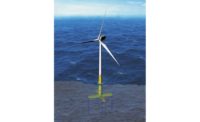Engineers and emergency planners from northern California to British Columbia say the massive undersea quake and tsunami that recently assaulted Japan gives clear warning about the danger that lurks just off the Pacific coast like a mad dog sleeping by the bed: A 630-mile-long geologic feature that was identified in 1984 is believed to be very similar to the one that broke with such violence off the coast of Japan in March.
Evidence of violent breaks in the featurecalled the Cascadia Subduction Zone, or CSZhas been found in sediment layers left by prehistoric tsunami. On April 25, 1992, a 7.2-Mw earthquake with an epicenter at the south end of the CSZ in northern California produced a modest tsunami that struck shore. That event confirmed the zone's potential to produce not only strong earthquakes but locally sourced tsunamis that could be ashore within as few as 10 minutes.
The 1992 quake finally got everybody onboard, says Lori Dengler, a geology professor at Humboldt State University in northern California. Before then, it was all paleo-tsunamic evidence. We were fortunate that our real live earthquake was not a 9 but a 7.2.
Alarmed, Congress in 1995 directed the National Oceanic and Atmospheric Administration to form a federal and state working group called the National Tsunami Mitigation Program. Much of its energy comes from officials in Alaska, Hawaii and the Pacific Northwest.
Based on fast-changing science, inundation zones have been modeled, maps drawn and revised, and warning systems deployed. FEMA P646: Guidelines for Design of Structures for Vertical Evacuation From Tsunamis was published in 2008 to help planners find ways to move people to safety within minutes.
A few West Coast vertical evacuation facilities are in conceptual design, but uncertainty persists about how to evaluate the risk or engineer for tsunami loads. Knowledge about the dangers continues to evolve.
We had been helping prepare for Cascadia for about 15 years, says Jay Raskin, president of Ecola Architects PC, Cannon Beach, Ore. As a Cannon Beach councilman and, for a time, mayor, Raskin advanced plans for a new city hall strong enough and tall enough not only to withstand a 9.0 quake but to provide shelter from tsunamis on its upper floor and rooffor a few hours, at leastto the resident population of 1,700. The problem of a possible additional 15,000 visitors who could be there on a summer day is not addressed by the plan.
We always thought getting to high ground was enoughand we have a lot of high ground around here, Raskin says. But each new tsunami in the world generates new insights, leads to improved modeling and data, and usually ratchets up the appreciated risk. The March 11 quake off the Tohoku region of the northeast coast of Honshu Island, Japan, is no exception. There is a greater respect for what is unknown about subduction-zone behavior, experts say.
Geologists, engineers and policymakers were caught off guard by the power of the Tohoku event. They believed the geology that launched it could produce an 8.2-Mw quakebut not a 9and defenses were scaled accordingly, Dengler says. The March 11 event is a reminder of how scant the historic record is on subduction zones, she says. The Tohoku quake itself could be considered unusualexcept there is so little data to say what unusual really is, she says.
Dengler says the Dec. 26, 2004, Indian Ocean quake was the greatest and longest subduction-zone rupture in recorded history1,400 kilometers long with 20 meters of slip. By contrast, she says, models of the Tohoku quake suggest the slip was in a patch 100 km long by 300 to 400 km wide; the shift was 50 meters. If I were at the tip of the plate, in a minute or two I would find myself 150 feet to the east. That's an unbelievably huge slip, she says.













Post a comment to this article
Report Abusive Comment